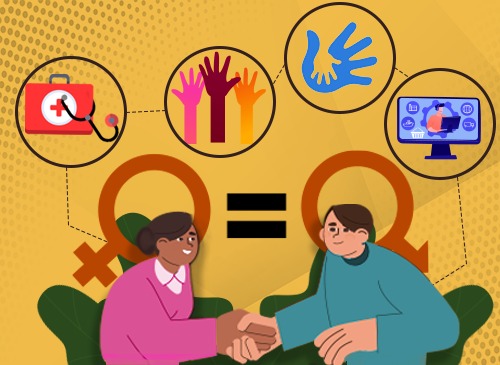As I move on to the ‘S’ segment of the ESG blog, I would like to acknowledge this segment as the most significant factor for screening any company’s potential.
A society, simply put, is a circle of individuals coexisting based on sets of norms that keep it sustainable.
The ‘S’, deals with the social aspects of investment sustainability. The term ‘social’ itself is quite a diverse concept and requires a lot of exploring; although the ESG perspective of the society explains all norms that would maintain human relationships complimenting the workforce, the society, and the political environment within which it exists.
The composition and workforce are the roots of a business. We have seen in multiple instances that a labor strike can make an entire business tumble down.
The business is built on the coexistence of humans and hence has one factor that acts as a chain of its sustainability—relationships. A company’s relationship with its employees, customers, and suppliers are the defining factors that facilitate or dampen its growth. For example, if an employee does or not like working in the company or the wages, the question will always persist whether they would walk the extra mile for the sake of organizational progress. We may keep talking about professionalism in the workplace, but my personal experience says that it is foolish to ignore human emotions and treat them as robots. A company’s employee interest directly relates to its financial profits.
Not only do the internal relationships affect the company, but its community relations also determine the kind of path it traverses. Social evolution is an essential pillar of human rights, and through ESG strategies, a company needs to assure with preventive measures against any human rights violation, internally or as an impact on the communities around.
Although a company cannot be held responsible for how the various ancillary organizations of its supply chain function, investors normally steer clear of companies that maintain integral relations with those with poor human right policy records.
EHS (Environmental, Health and Safety) is also a significant factor in evaluating the “S” component. The concept of EHS is based on the health and safety of company workers and the environment they work in. A company that is likely to put people at unnecessary risk has been usually condemned by the general public. The EHS is practiced in organizations that strive to maintain a good workplace policy.
Lastly, I would like to mention that diversity does not mean to be just a political discussion. Be it race, gender, status, or ethnicity, promoting diversity reflects well on the company in the public eye and increases the rate of productivity. Discrimination has always been a two-edged sword, for which we should have zero tolerance.
To sum up, the ‘S’ component reflects the social responsibilities of a company and is essential for sustainability.




No comments:
Post a Comment